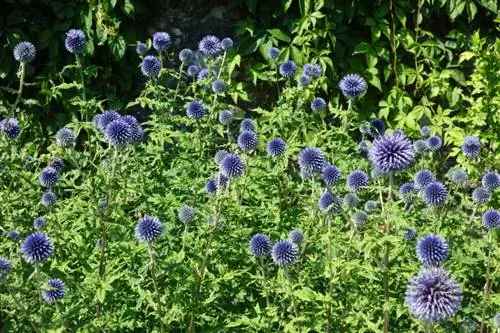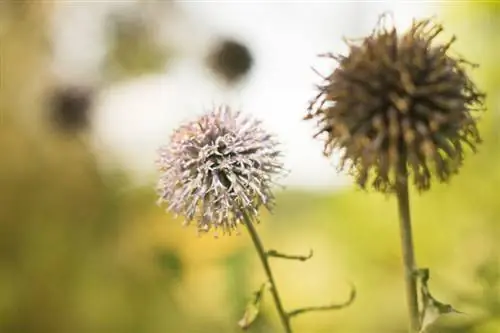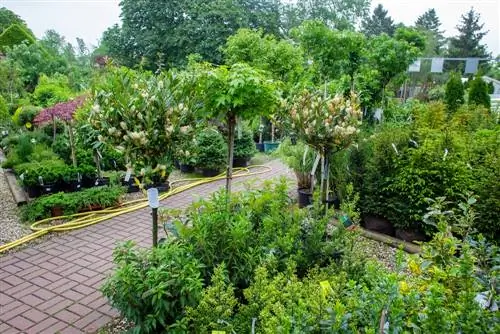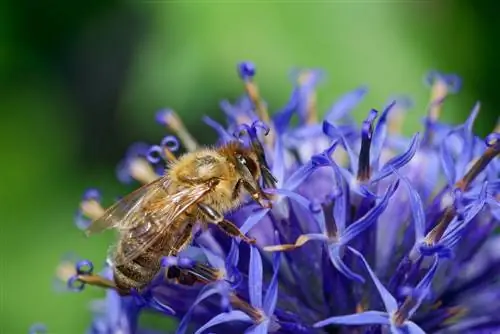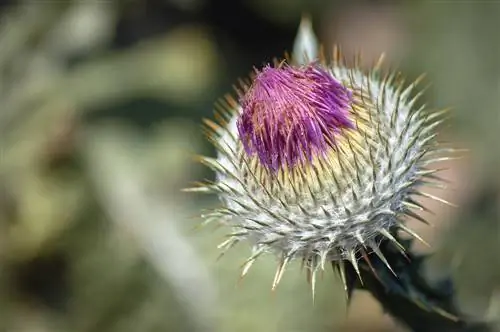- Author admin [email protected].
- Public 2023-12-16 16:46.
- Last modified 2025-01-23 11:20.
Echinops is an extremely attractive garden perennial that sets attractive accents with its extraordinary flowers up to two meters high. The steel blue flowers look like they come from another world and harmonize extremely well with modern gardens. You can find out how to properly care for the uncomplicated globe thistle in this article.

How do I properly care for a globe thistle?
Global thistle care includes regular watering after planting, sparing fertilization in spring, occasional cutting back of dead flowers and winter protection in cold regions. Diseases and pests are rare, but pay attention to waterlogging to avoid root rot.
Water requirements
Immediately after planting, you should water the globe thistle regularly for a few weeks so that it grows well. The thistle is one of the least thirsty plants and therefore usually gets by on rainwater. You should only water Echinops thoroughly occasionally during longer dry periods.
Fertilize
The nutrient requirements of globe thistle are also not particularly high. It is enough to provide the plant with a little complete fertilizer in spring. The thistle thrives particularly well if you use guano (€15.00 on Amazon) as fertilizer. This promotes abundance of flowers and ensures strong and he althy growth of the plant. You can avoid adding more fertilizer in the summer.
Cutting
Echinops does not need to be cut back during the summer months. Only faded and wilted leaves should be cut off regularly. This prevents the often undesirable self-sowing of the globe thistle and promotes new flowering.
In late autumn or spring, the stems are cut off close to the ground, as is the case with many garden perennials.
Winter protection
Echinops is relatively hardy and in mild regions only needs winter protection made from brushwood in the first year. In subsequent years, the plant only needs to be protected from frost in locations where the temperature falls below -10 degrees.
Diseases and pests
The globe thistle is one of the few garden plants that is hardly affected by diseases or pests. The thistle only reacts sensitively to too much moisture or waterlogging, which quickly leads to root rot.
Occasionally Echinops is attacked by aphids or fungi. These damaging symptoms can usually be brought under control quickly through suitable spraying with plant manure or chemical agents.
Tip
Globe thistles have extremely spiny leaves. To avoid painful injuries to your hands, you should wear gloves during all care procedures.

